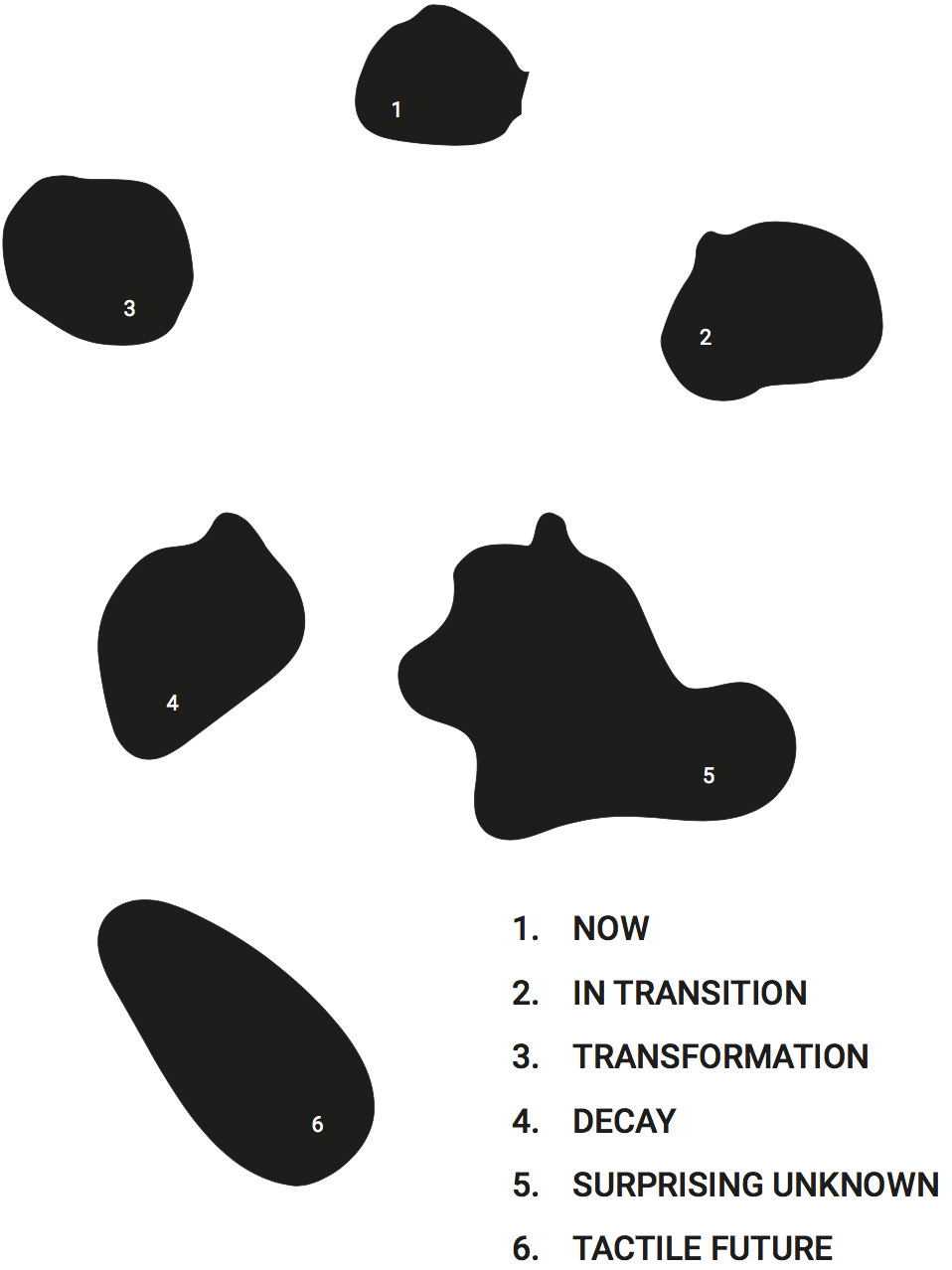Sensorial Time Travel
What does a living city smell like? Embark on a time travel with your nose. Find your way through the tired lungs of the now, beyond the smell of car exhausts. Leave the poisonous air of the now behind, and take a deep breath from the future.
Idea
A sensorial journey to enter the void of the future, travelling through stages of urban transitions. Air is the metaphor representing our interrelated ecosystem. It is the junction of industrialised cities.

Inflated membranes, as lungs of our society, containing particles and materials. This installation explores human perceptions of the urban environment.
Smelling is like breathing the city. It is the sense that is most connected to our memory. While breathing we collect information, we detect, navigate, interact and connect with our environment. Through our senses we absorb and perceive the spaces around us. Memories are imprinted through embodied experiences. Much research has been done about the effects of olfactory presence in cities. Most studies have focused on prevention, elimination and masking bad (unpleasant) smells.
Sensorial Time Travel is a proposal that does not aim to represent fixed futures scenarios. Rather, it wants to evoke exploration and imagination. Through physical encounters, experimentation and open dialogue, this modular installation is a way to create awareness and arouse curiosity for possible cities and sceneries. As an interactive field research.

The now is the first stage in which we enter our polluted environment. Intoxicating, inescapable smell of tar. For decades, since the industrialisation, it has served many purposes. Extracted from coal, tar has paved our ways into modernised efficient cities.
Its fumes, compounds and particles, still incorporated in many products, infrastructure and atmosphere remain to be the traces of that era. The use of fossil fuels has a long tail that will keep reminding us in the future of detrimental human activities.
Installation

Artificial bio ”spheres” containing isolated air, fumes, smoke, controlled temperature, airflow and pressure to embody urban spaces. Urban landscapes and all its elements, such as streets, infrastructure, dynamics, buildings will change drastically with use of alternative fuels. How will that affect the way we experience urban spaces, how will it change the air that we breath? How will future cities be remembered?

Starting from our polluted reality, this research will explore possible urban transitions. As a pop-up modular installation, it will collect smell stories and samples to create a futuristic smell scape. 6 spaces are divided in focus-groups of materials and their urban presence.
About the maker
By
Jamillah Sungkar
More information
sensorialtimetravel.com